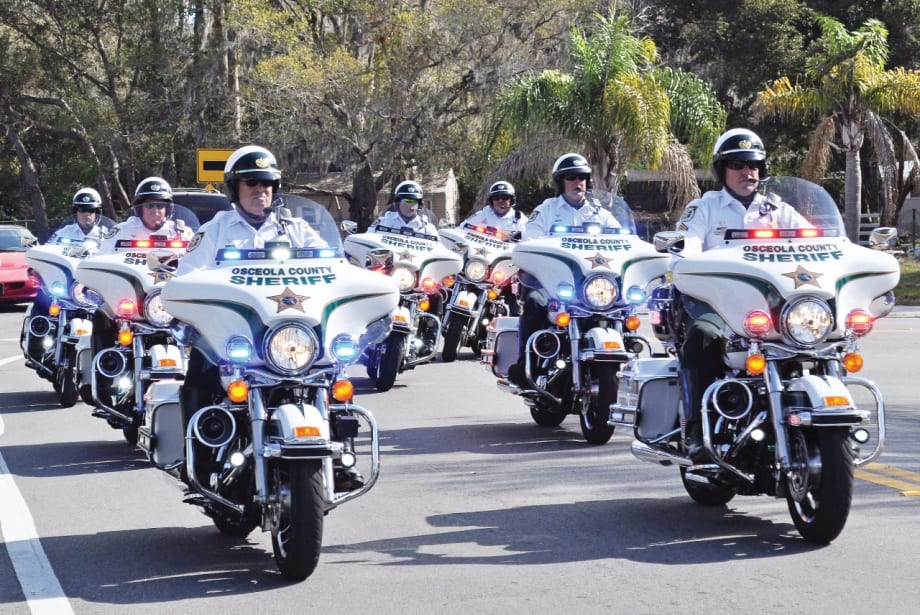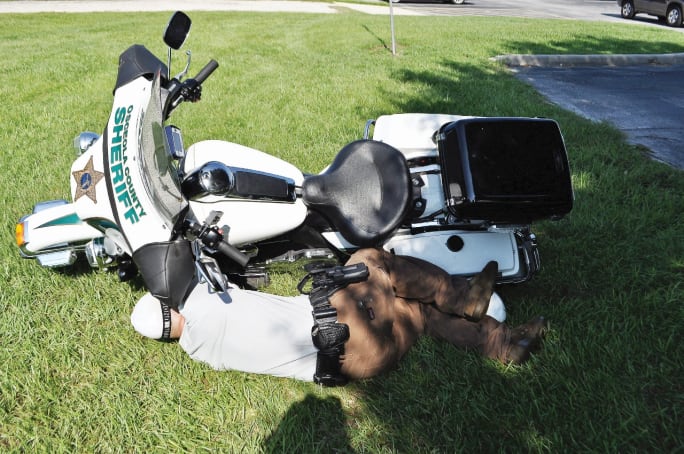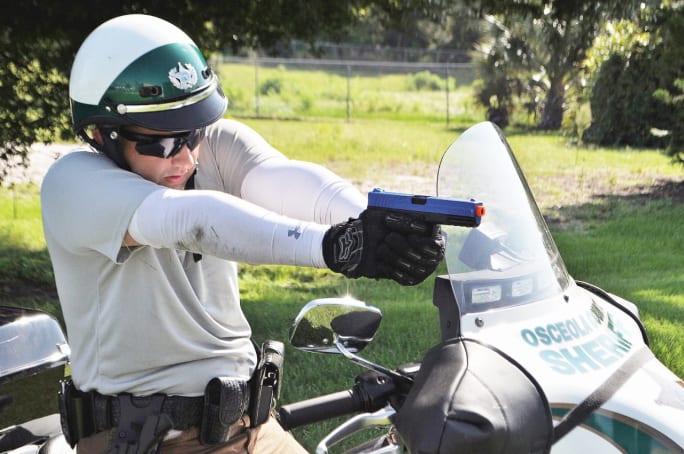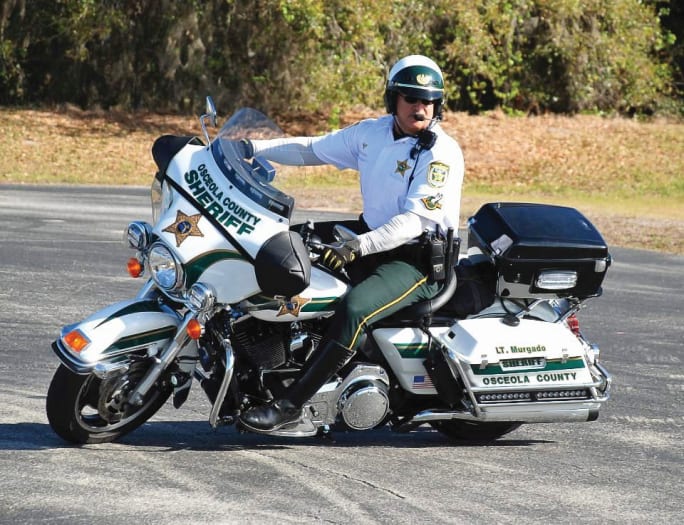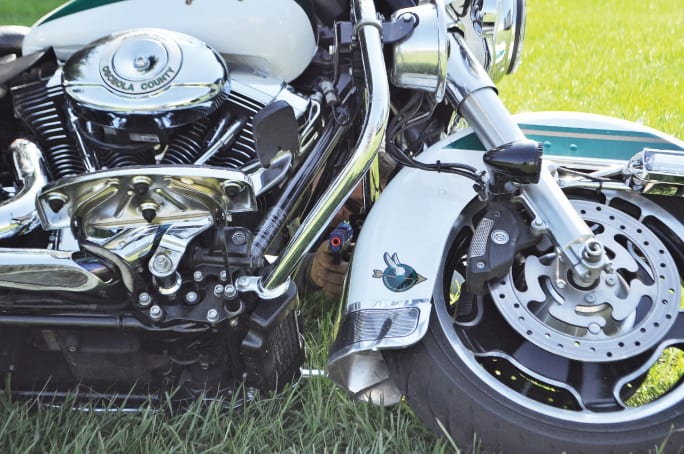
Motorcycles can offer cover and concealment in an emergency. If the bad guys can't see you, then they can't shoot you. Photo: Amaury Murgado
Deploying units to a critical incident as soon as possible is imperative. In order to speed up response times, you have to look at your available resources and pair them with the situation you want to improve. Two questions should immediately come to mind. First, what resources aren't you tapping into, and second, of the ones you are using, how can you use them more effectively? We must find a way to create some type of tactical advantage. There is a saying that goes something like, you go to war with the army you have and not the one you wish you had. It's no different in law enforcement; the units you deploy are the ones that are available. And if you have a motor unit, remember to count it as one of your options.
With a motor unit, you can create some unconventional options if you think outside of their traditional roles. If your agency's command staff doesn't grasp that motor units are more than just traffic units, they are failing to use them to their full potential. I know that in my former agency, I had a hell of a time convincing them otherwise in the five years I was the motor unit lieutenant.



